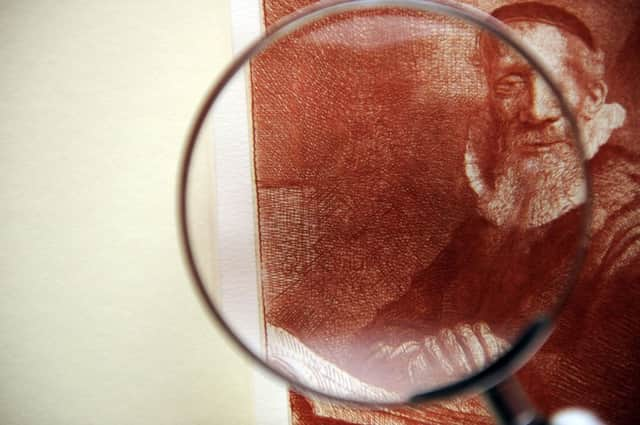Lost Rembrandt found in Edinburgh gallery vaults


But now a rare etching by Dutch master Rembrandt has been given pride of place in the displays of the Scottish National Gallery after an eagle-eyed curator suspected it was actually an original.
The red ink portrait of Amsterdam preacher Jan Cornelis Sylvius, which was created from an etching plate made by the artist in 1633, is believed to be the only one of its kind in existence. Even though it was made after the artist’s death, because it was made directly from his plate it counts as a “Rembrandt”.
Advertisement
Hide AdThe National Galleries of Scotland has around 100 “impressions” made from such copper plates created by the artist, who was better known in his lifetime for etchings and engravings than for his paintings.
But the etching, which had previously been catalogued as a copy of the portrait, is now thought to be by far the most valuable after detective work by an expert at the Edinburgh gallery. The venue has put the etching by Rembrandt – who is regarded as one of the most skilled printmakers in the history of art – on display along with two paintings: a self-portrait dating from 1657 and A Women in Bed from 1646.
The subject of the portrait – believed to be worth hundreds of thousands of pounds – was a relative of Saskia van Uylenburgh, whom the artist wed in 1634. Dr Tico Seifert, senior curator for northern European art, said his curiosity was immediately piqued when he came across the etching in a box of prints because all known copies of the print are in reverse, unlike this one, which was nestled among dozens of copies of the artist’s work.
Further research, including authenticity checks with Rembrandt experts in Amsterdam, found the portrait of Sylvius was the only existing impression of the work in red ink.
Dr Seifert said: “These kind of plates were created through a chemical process which would see the artist polish the plate, cover it with a varnish and then take a very sharp, fine needle and scratch the varnish.
“The plate would then be put into an acid bath, so it was a chemical process rather than a mechanical process. You would take a wet piece of paper, put it on top of the plate and run it through a roller press. The big difference with this work is that it was printed in red ink. When I contacted colleagues in Amsterdam to find out about impressions in red ink, which are generally very rare, to my great surprise and delight they told me that this was a unique print.
Advertisement
Hide Ad“They are very rare in themselves, but a rare Rembrandt print is extremely rare. It was a pretty exciting discovery and certainly not the kind of thing that happens every day.
“This particular etching was actually made posthumously. He died in 1669 and this is most likely to have been done in the following century. You can actually see that there have been repairs to the plate, because it was used so much, but it is minor touching-up.
Advertisement
Hide Ad“These copper plates were extremely valuable at the time because you could make these prints from them even after artists had died.
“As red impressions were highly fashionable in the early 18th century, our hunch is this dates from around that time.
“The absolutely crucial thing is that the original plate was used. A copy would have been made on a new plate, where someone else would have gone through the chemical process to create a similar image.”
Analysis: Prints made Hogarth see red
Any new discovery in the National Collection is of interest and this newly identified Rembrandt etching is no exception. Its subject is Jan Cornelis Sylvius. He was a preacher and in Rembrandt’s dignified portrait he is sitting, lost in thought, with his Bible in front of him. He was a relative of the artist’s wife and godfather to their first child. The portrait shows that intimacy.
Issued in the 18th century from a restored plate, however, the print is also testimony to the enduring fashion for Rembrandt’s prints, though you do wonder a little what Rembrandt would have thought of its being printed in red. Willian Hogarth was so infuriated by the fashionable preference for such old masters over his own contemporary productions that he made a mock Rembrandt etching. He soaked it in coffee to make it look nice and old and signed it as “Designed and scratch’d in the true Dutch manner”.
• Duncan Macmillan is the chief art critic of The Scotsman